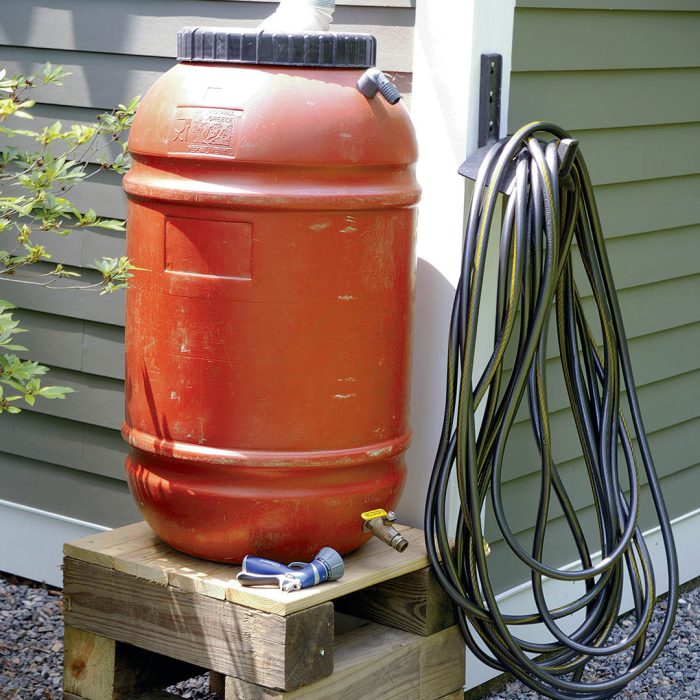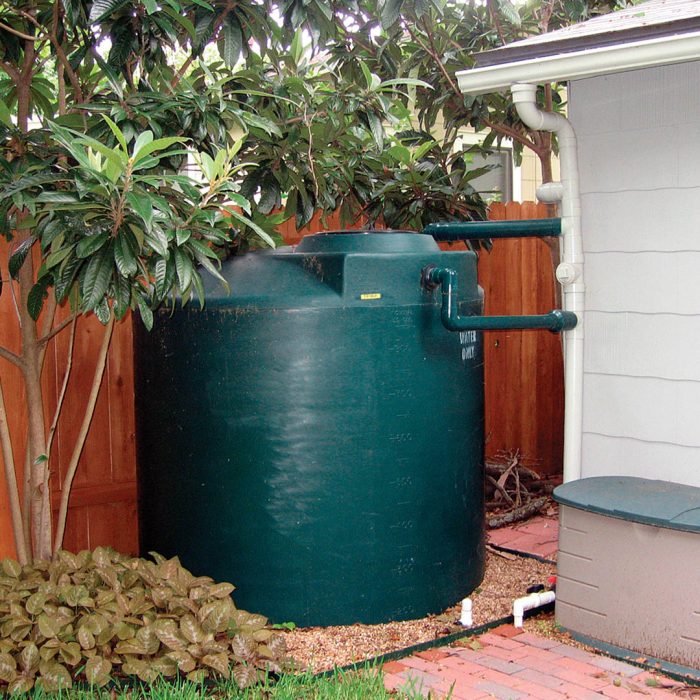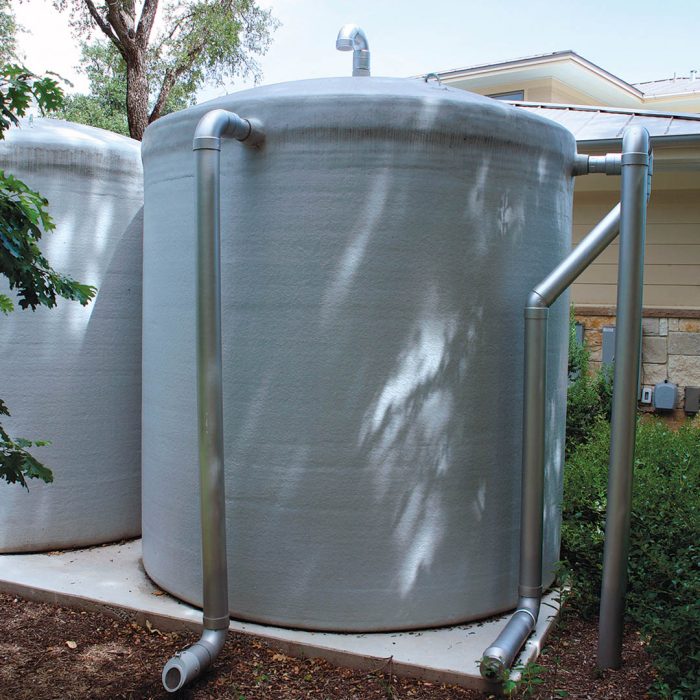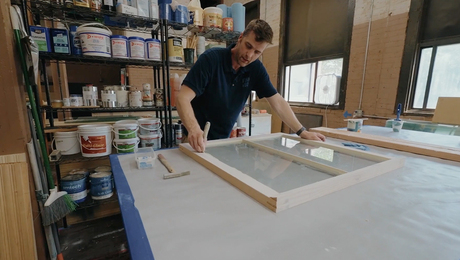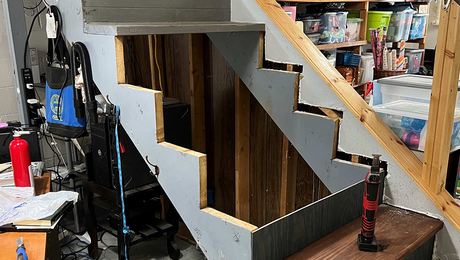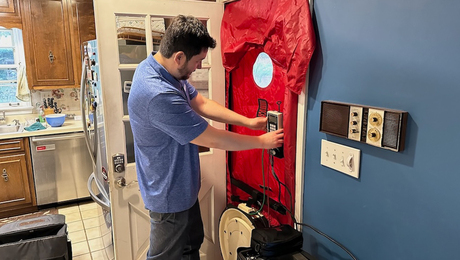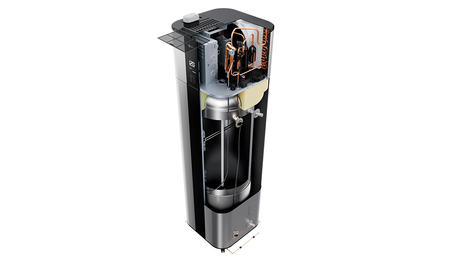Rainwater Harvesting 101
There's a constant source of clean water for you to use, and all you have to do is collect it.
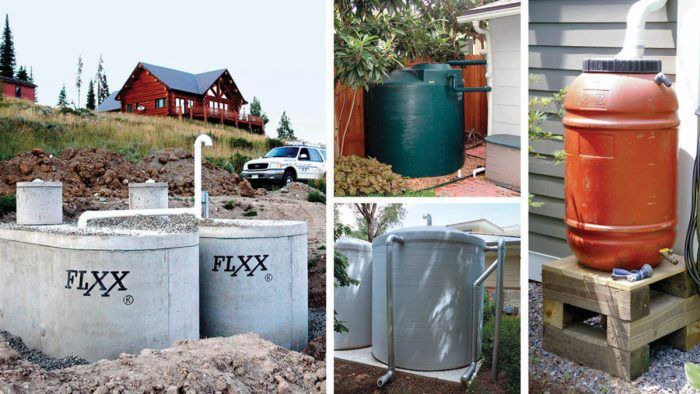
The process of rainwater harvesting isn’t complicated: Collect rainwater from a roof, and divert it from the gutters into a storage tank. Former senior editor Charles Bickford describes the various storage options for above-grade and below-grade water tanks, with a look into the process of filtering potable water and the routine maintenance owners of these systems can expect.
New Technology, New Opportunities
Gathering water has always been a big deal, but in recent times, technology has made water accessible to most everyone in the United States, even those inhabitants of historically arid regions. (Witness the acres of golf courses and green lawns in the deserts of Las Vegas or Phoenix.) However, because of pollution, overuse, and changes in weather patterns, a consistent supply of clean water everywhere is no longer a sure thing. And while it hasn’t become a full-blown ecological crisis in most parts of the country, water is now a topic that’s increasingly hard to ignore.
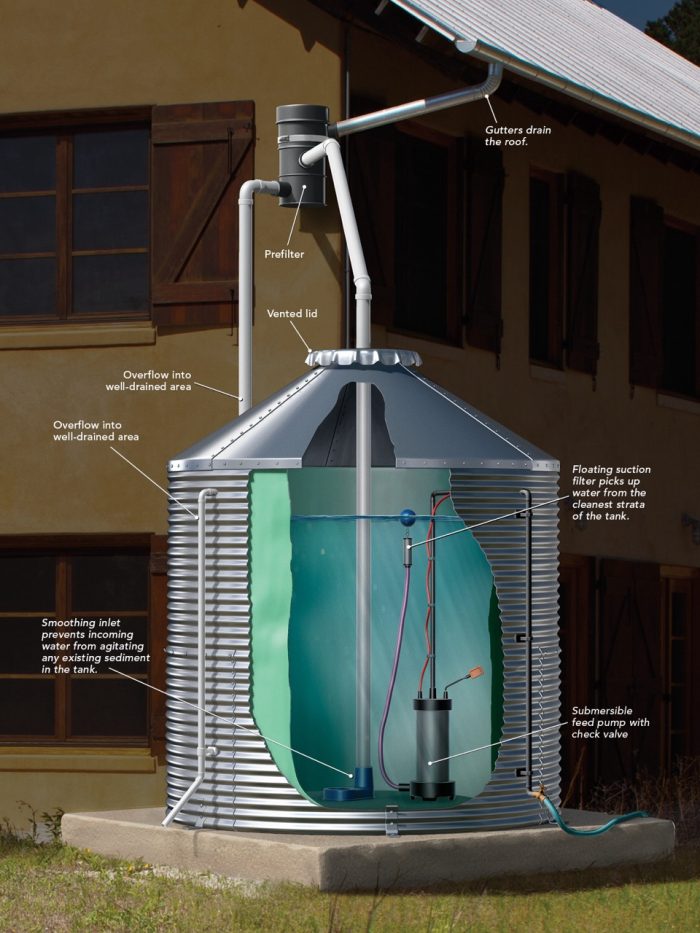
Over the last few decades, homeowners and businesses alike have been turning to rainwater harvesting. It’s proven to be a viable alternative to using well water during dry spells, allowing homeowners to water lawns, wash dishes, bathe, and drink freely. For others, rainwater harvesting provides an alternative to using mineral-laden well water, or a way to control storm-water runoff. For builders and architects using the LEED program, certain applications can qualify for points. Of course, collecting rain has been part of the standard building practice for centuries in historically dry regions of the world, and it’s now on a global comeback.
Rainwater harvesting is integrated into the municipal infrastructure in Singapore and is required for all new construction on St. Thomas, as well as other Caribbean islands. The process of rainwater harvesting isn’t complicated: Collect rainwater from a roof, and divert it from the gutters into a storage tank. Systems can range from a 55-gal. rain barrel to underground tanks that hold in excess of 50,000 gal. Homeowners themselves can install many of the systems, but most suppliers offer installation services as well. The important factors that determine the type and size of a system are the amount that can be collected and the water’s end use.
Wait — It’s Not Legal?
Until the last decade or so, some Western states didn’t allow the collection of rainwater because it was considered a violation of the water rights of someone downstream. However, most places have realized that collecting rainfall is actually beneficial, a way to conserve a resource that otherwise would evaporate into the air. In 2009, the Colorado legislature passed a law that allows residential collection. The state of Washington also clarified its position at the same time, encouraging water collection as long as it doesn’t ”impair stream flows or existing water rights.”
The last holdout, Utah, has loosened its regulations and now allows residential systems of up to 100 gal. without a permit and up to 2500 gal. after registering with the Utah Division of Water Rights. It’s always a good idea to check with your local government before investing in a system. You may even end up saving money, because there are educational and incentive programs—both city and statewide—that are set up to encourage harvesting.
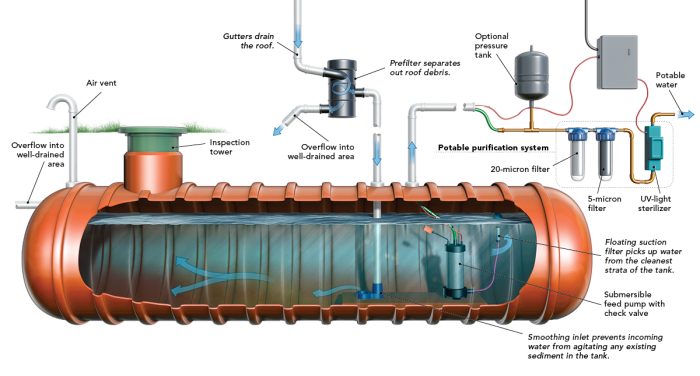
That’s a Lot of Water
It’s hard to realize just how much rain rolls off one roof until you contain it. Try this: Calculate the area of your roof, multiply it by the average monthly rainfall, then multiply that number by 0.623. Even in rain-starved places like Tucson, Ariz., which averages 1 in. of rain per month, a 1200-sq.-ft. roof would collect almost 9000 gal. per year (1200 sq. ft. × 1 in. × 0.623 = 747.6 gal. × 12 months = 8971 gal.).
The quality of the water collected depends in part on the roofing material. In the rainwater-harvesting document prepared by the EPA, wood, copper, painted, or lead-flashed roofs aren’t recommended for harvesting because the water tends to leach out harmful substances from those materials. Unpainted Galvalume or rubber membranes are generally considered to be the best for water quality. To keep debris out of the storage, covered gutters are usually recommended. More importantly, fixtures called prefilters are installed between the gutters and the storage tank. They’re engineered to separate roof debris from the incoming water and to divert it away from the tank.
Storage Options Abound
Once you’ve got the water off the roof, there are several storage options. Above-ground tanks are generally less expensive because they don’t require excavation, but the tank material must be opaque to prevent sunlight from penetrating the tank walls and encouraging bacterial growth. Choices include corrugated-steel or aluminum shells that bolt together around a heavy-duty plastic liner, high-density polyethylene (HDPE), and fiberglass. There’s also a unit called the Rainwater Pillow (rainwaterpillow.com), essentially a composite bladder that can hold up to 50,000 gal., that’s designed to be stored in a crawlspace or under a porch.
Below-grade tanks are available in HDPE, concrete, and fiberglass. No matter the location above or below grade, site preparation is key to avoid ruptured tanks or water lines. David Crawford of the American Rainwater Catchment Systems Association (arcsa.org) recommends a 4-in. to 6-in. bed of gravel below any installation to prevent erosion or heaving. Installations in earthquake zones must be built to local code standards as well.
A Variety of Tanks
|
|
|
|
|
|
Safe Enough to Drink
According to the American Water Works Association, landscaping soaks up about 60% of our water supply. While many systems are used to irrigate lawns and gardens, there are others that provide a home’s entire supply of potable water. With a steady resupply of rain, a 3000-gal. to 5000-gal. system can supply the needs of a typical family of four. A potable collection system is identical to a nonpotablesystem except that it intercepts the indoor-bound water with a series of filters.
The typical setup consists of a three-stage filtration process in which water is pumped successively through a 20-micron charcoal filter and a 5-micron filter and then is sterilized by an ultraviolet light. This array of filters only adds $1500 to $2000 to the overall cost of a system. In its simplest form, a potable system is the only water supply coming into a house, although there are some instances when rainwater is used in conjunction with an existing system such as a well or a municipal supply. If more than one source is supplying a residence, local regulations may require the installation of a backflow prevention valve to avoid potential contamination and may even require that the rainwater be chlorinated and/or dyed.
A Reality Check Before the Leap
Unless you’re sold on a small rain barrel, chances are you’re looking to spend some serious money that you may not recoup in savings. “People don’t understand how expensive these systems are,” says Lee Jaslow, head of a leading harvesting supplier, Conservation Technology, in Baltimore. “A typical system doesn’t pay for itself.” Of course, the cost of digging a new well isn’t cheap, either; in some cases, it’s not even an option.
Austin, Texas, architect Peter Pfieffer, who has specified rainwater harvesting on projects for more than 20 years, suggests that customers first figure out what they are trying to achieve. “Most people either go for saving water or for water quality,” he says. If you’re trying to conserve, lower usage will always pay off first, so cut back on landscape watering and practice xeriscaping instead.” He says that in his area, he could use 20,000 gal. per year just watering the lawn. Low-flow showerheads, dual-stage toilets, and water-conserving appliances all help to keep water usage lower.
There’s also some routine maintenance, which not all owners expect. Pfieffer cautions, “These systems require work—a periodic check of filters, pumps, and the cisterns themselves.” Gutters, downspouts, and prefilters also should be cleaned a couple of times a year. Cisterns should be inspected every couple of years, but as long as debris is filtered from the incoming water, they shouldn’t require additional cleaning.
— Charles Bickford; a former senior editor.
From Fine Homebuilding #323
RELATED STORIES
- Rainwater Collection Lowers the Impact on a Coastal Site
- Rainwater-Collection Systems
- Rainwater Storage and Fence in One
Fine Homebuilding Recommended Products
Fine Homebuilding receives a commission for items purchased through links on this site, including Amazon Associates and other affiliate advertising programs.

Code Check 10th Edition: An Illustrated Guide to Building a Safe House

Pretty Good House

All New Kitchen Ideas that Work
